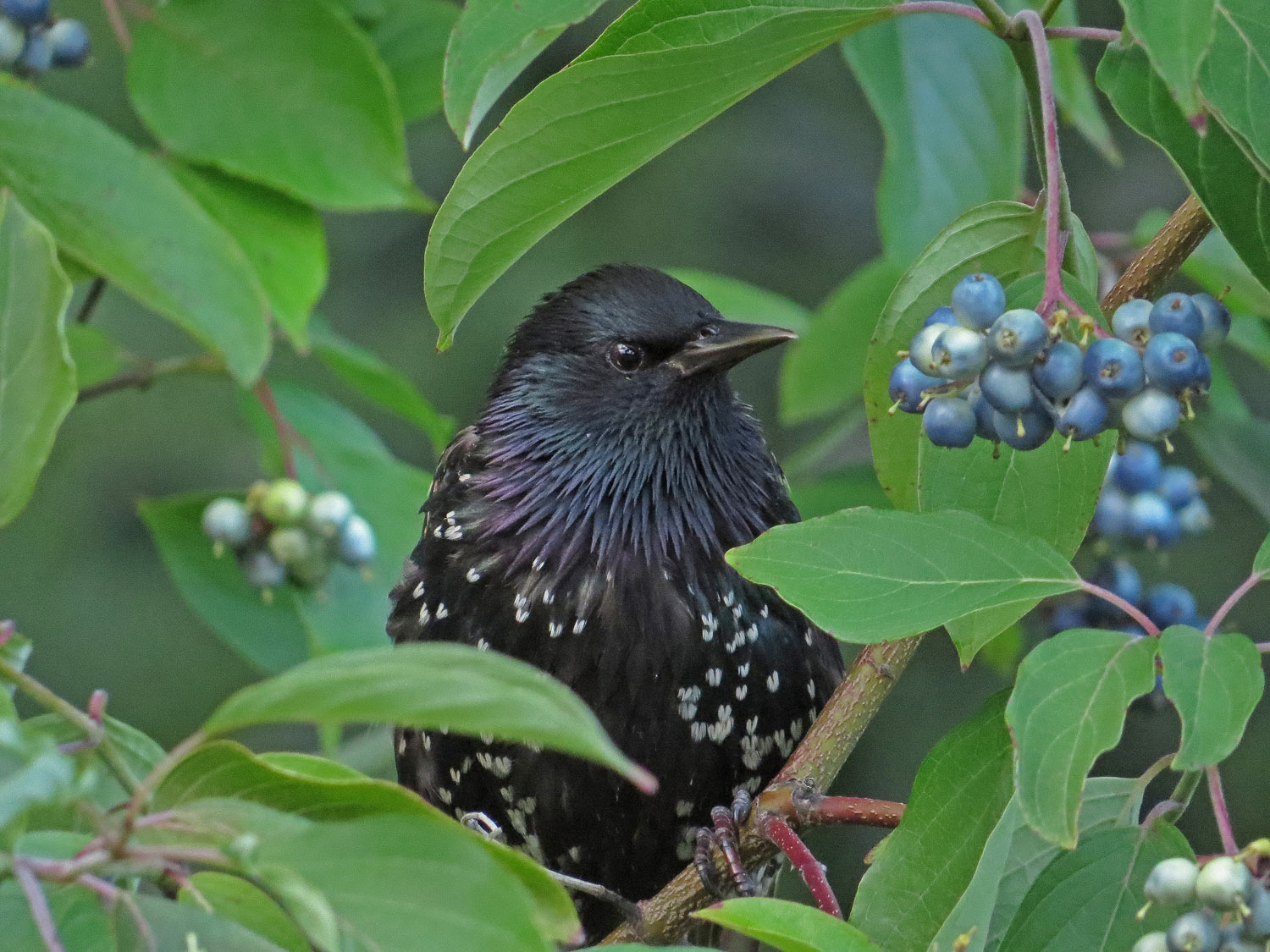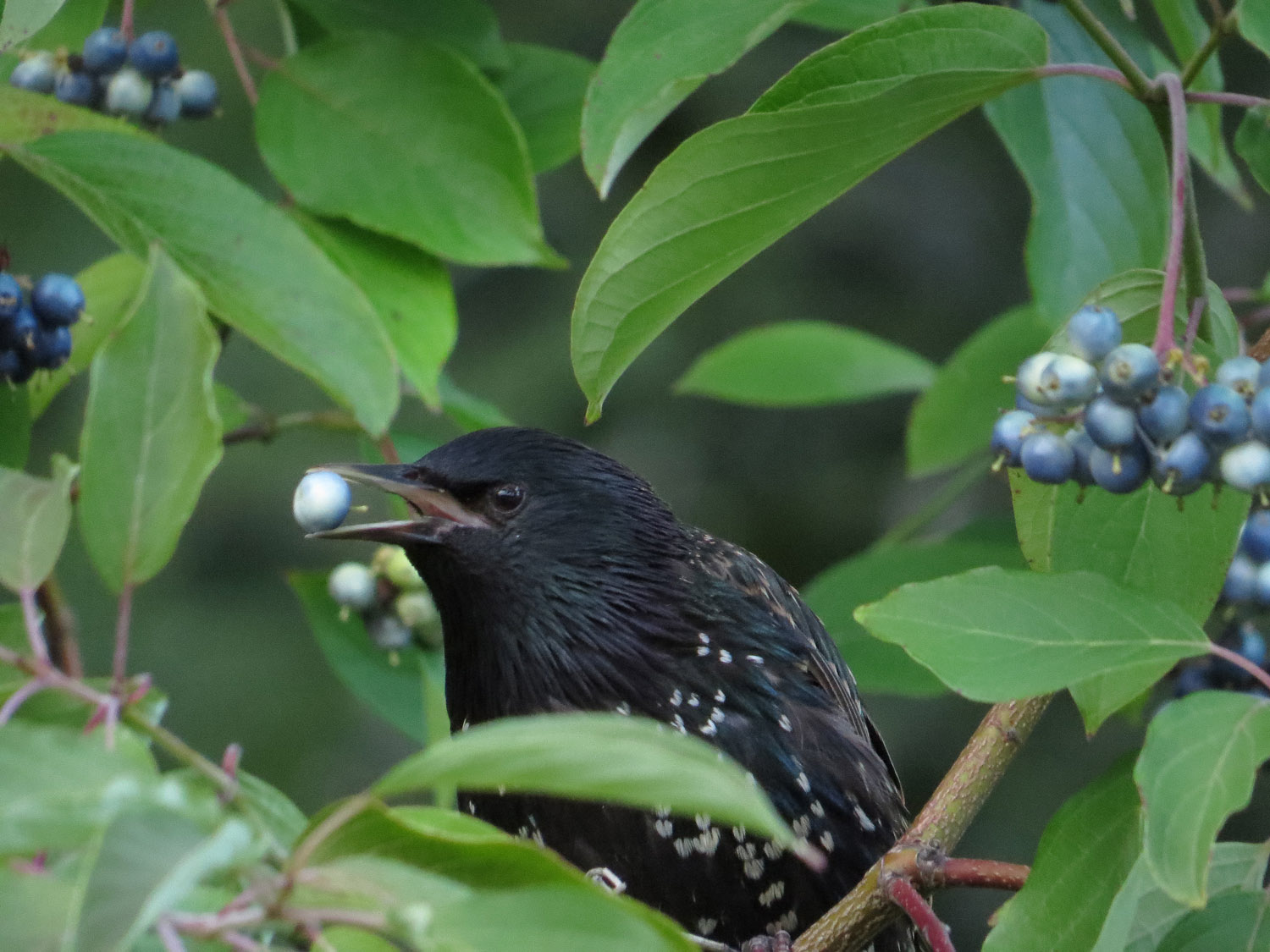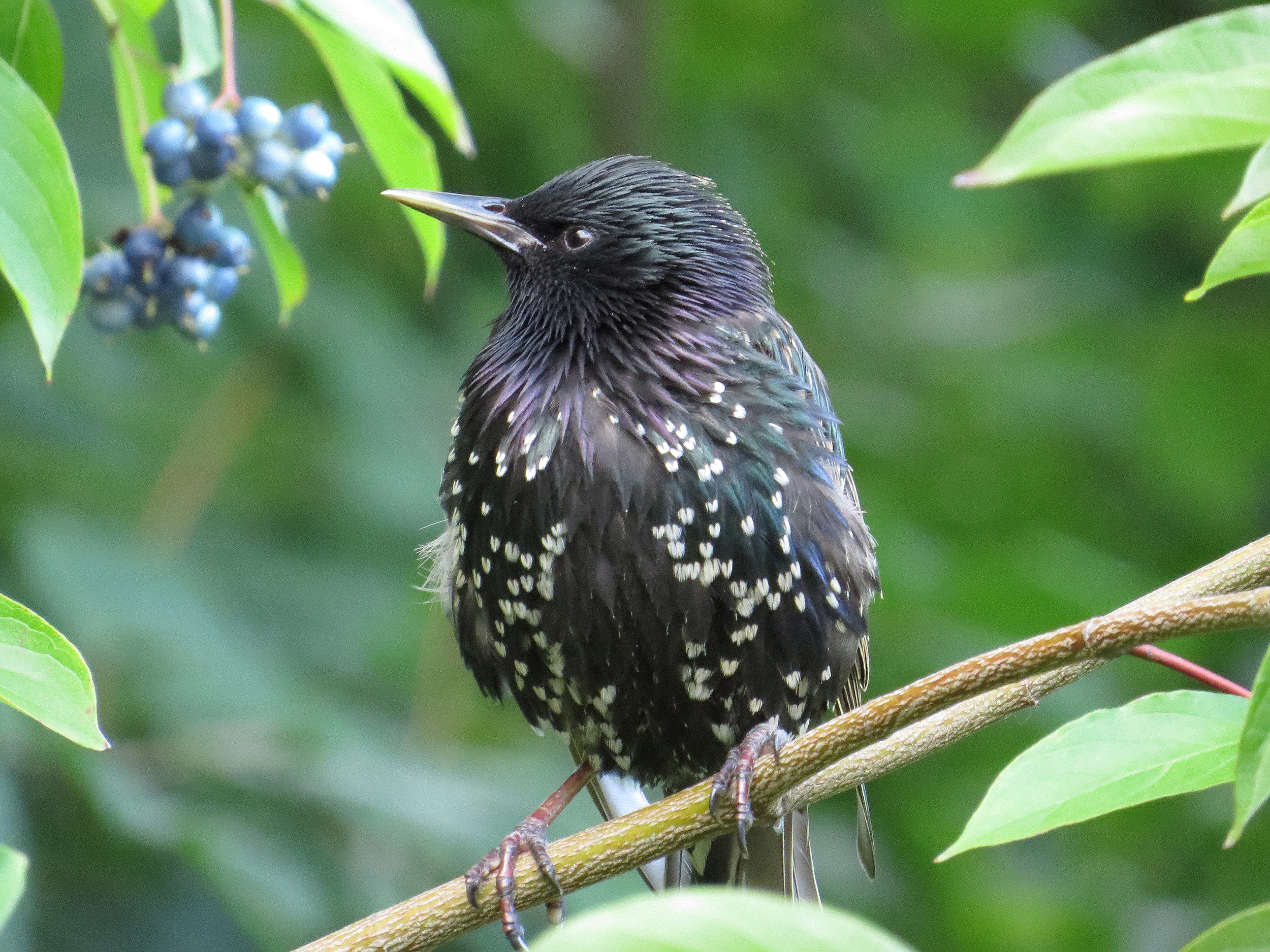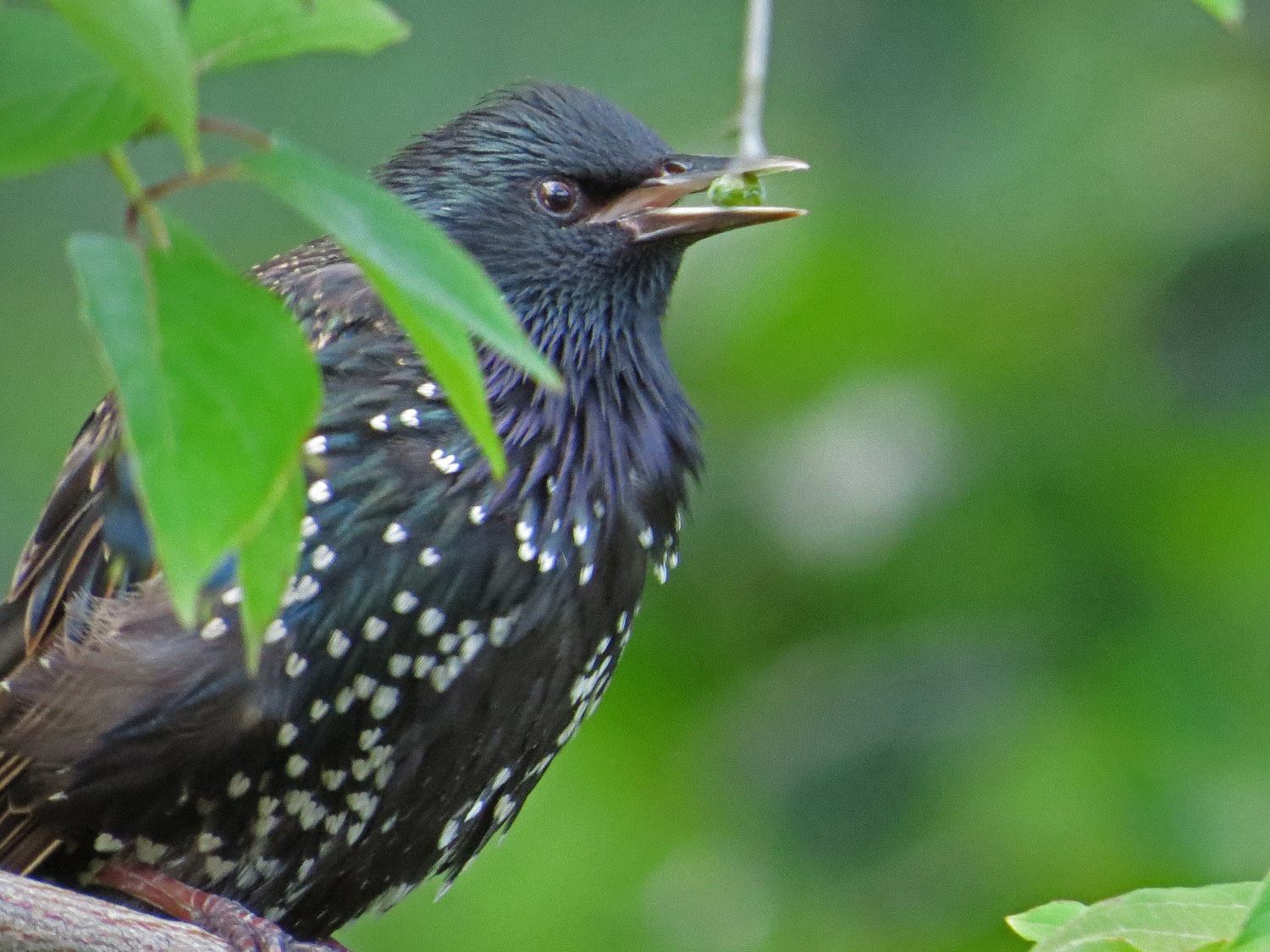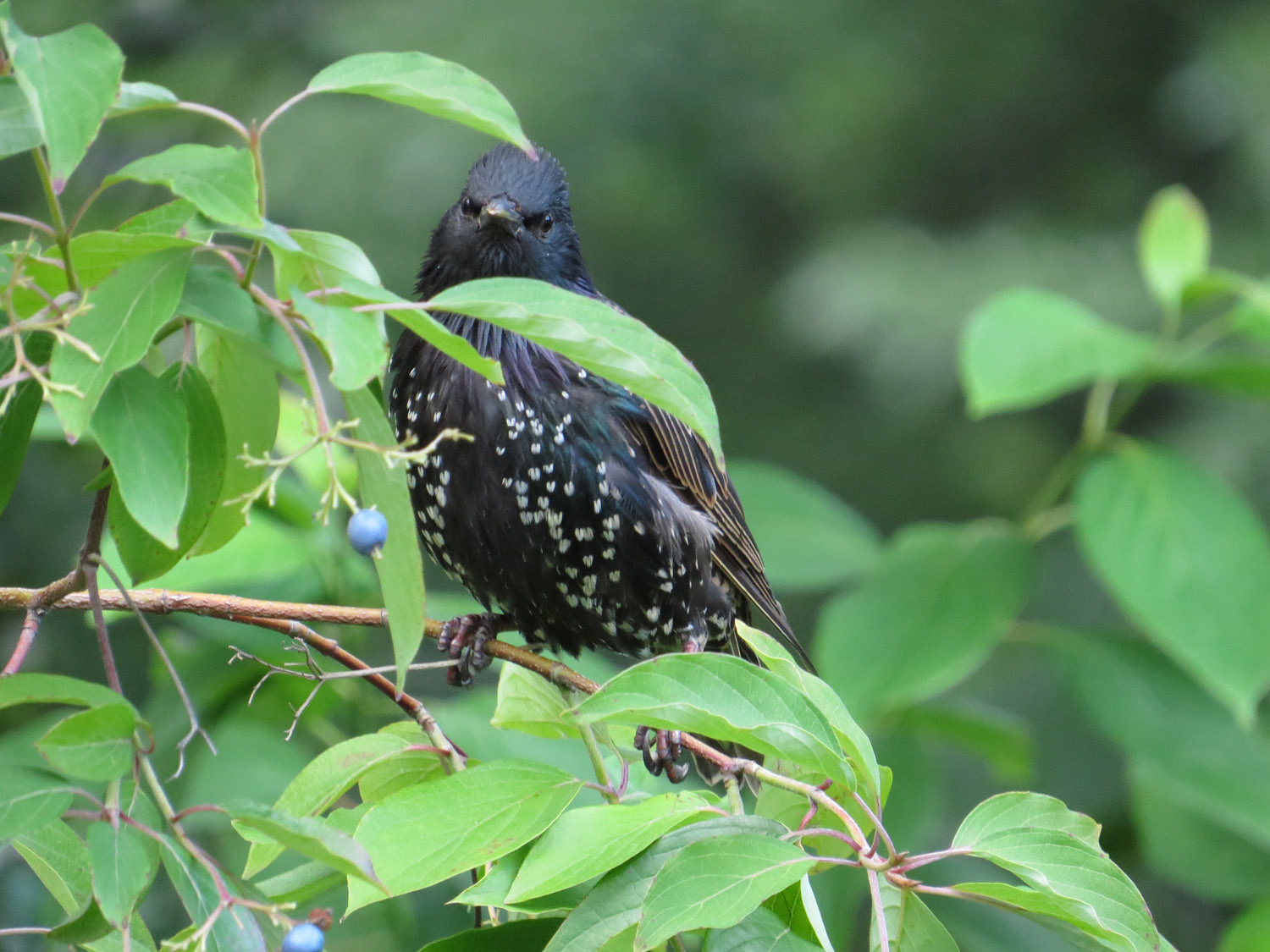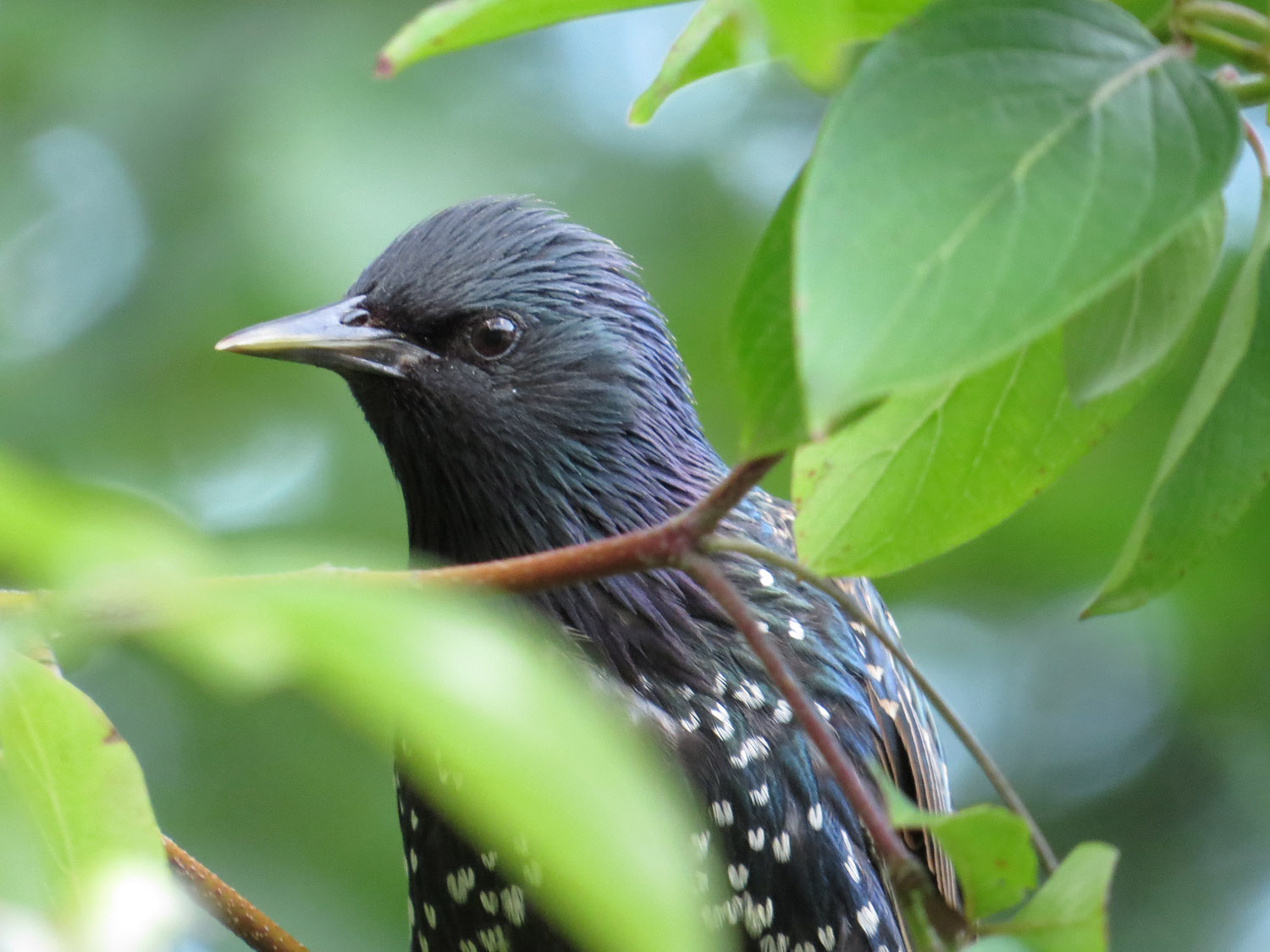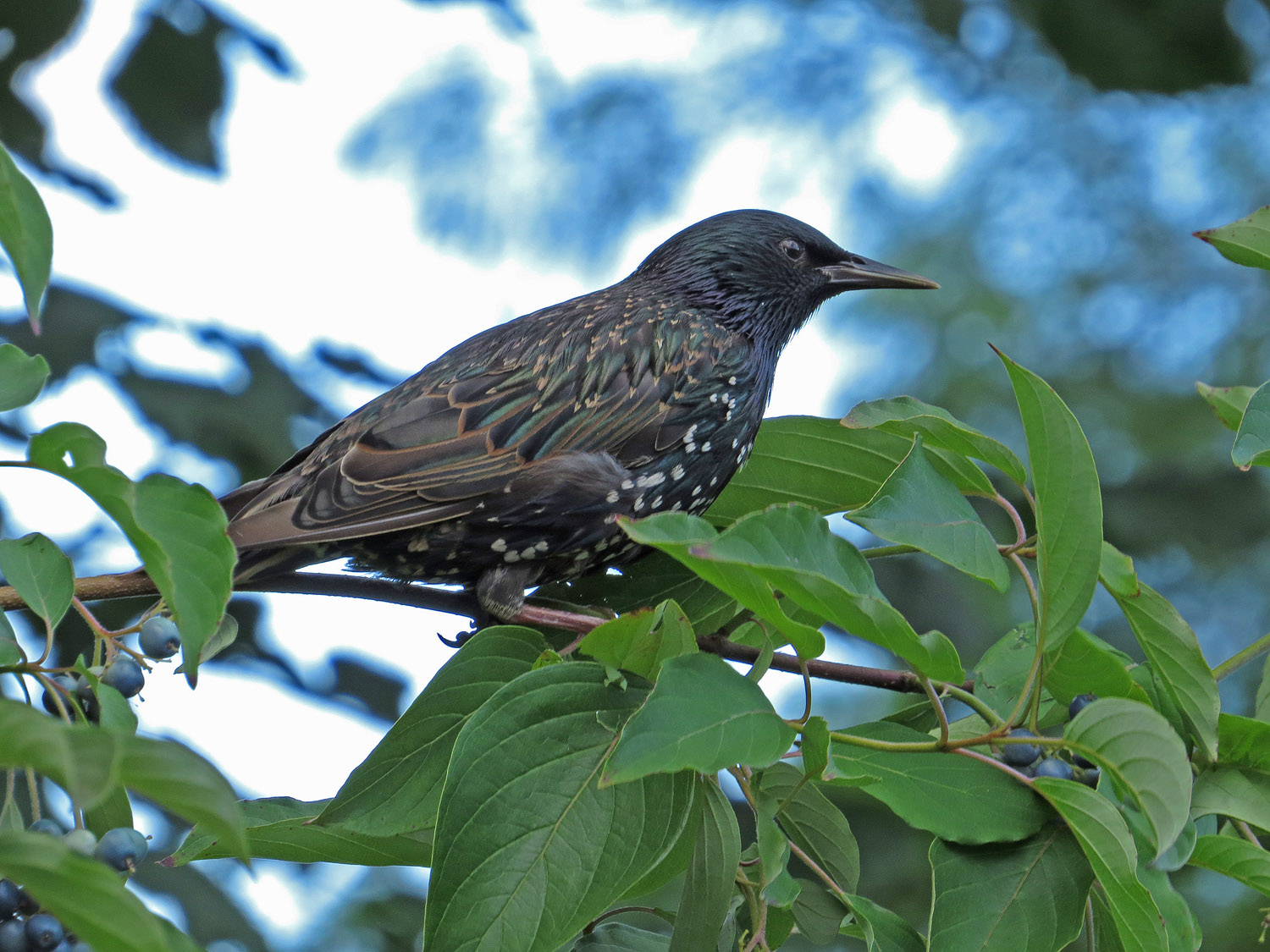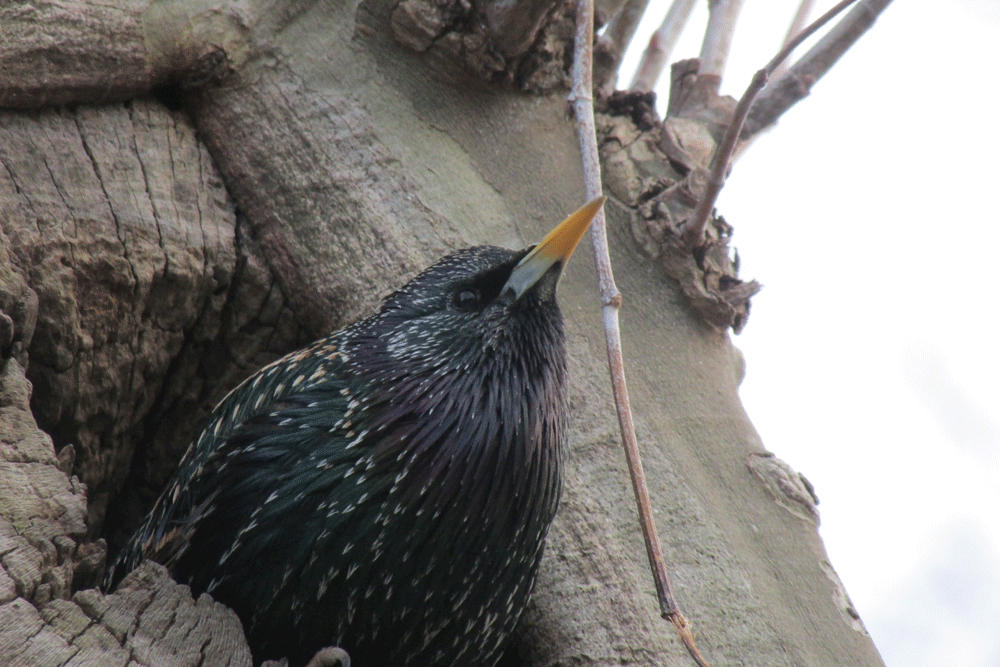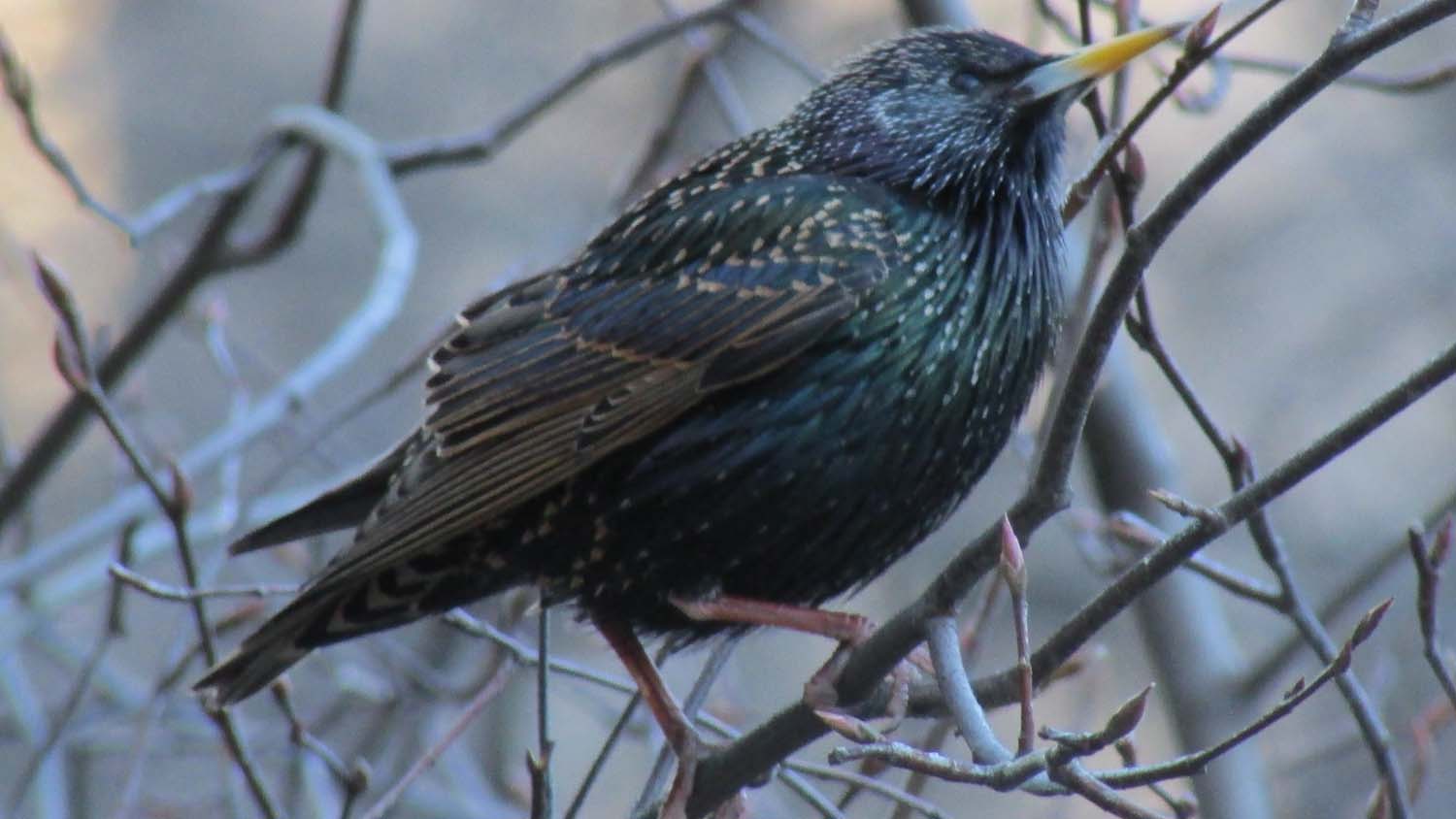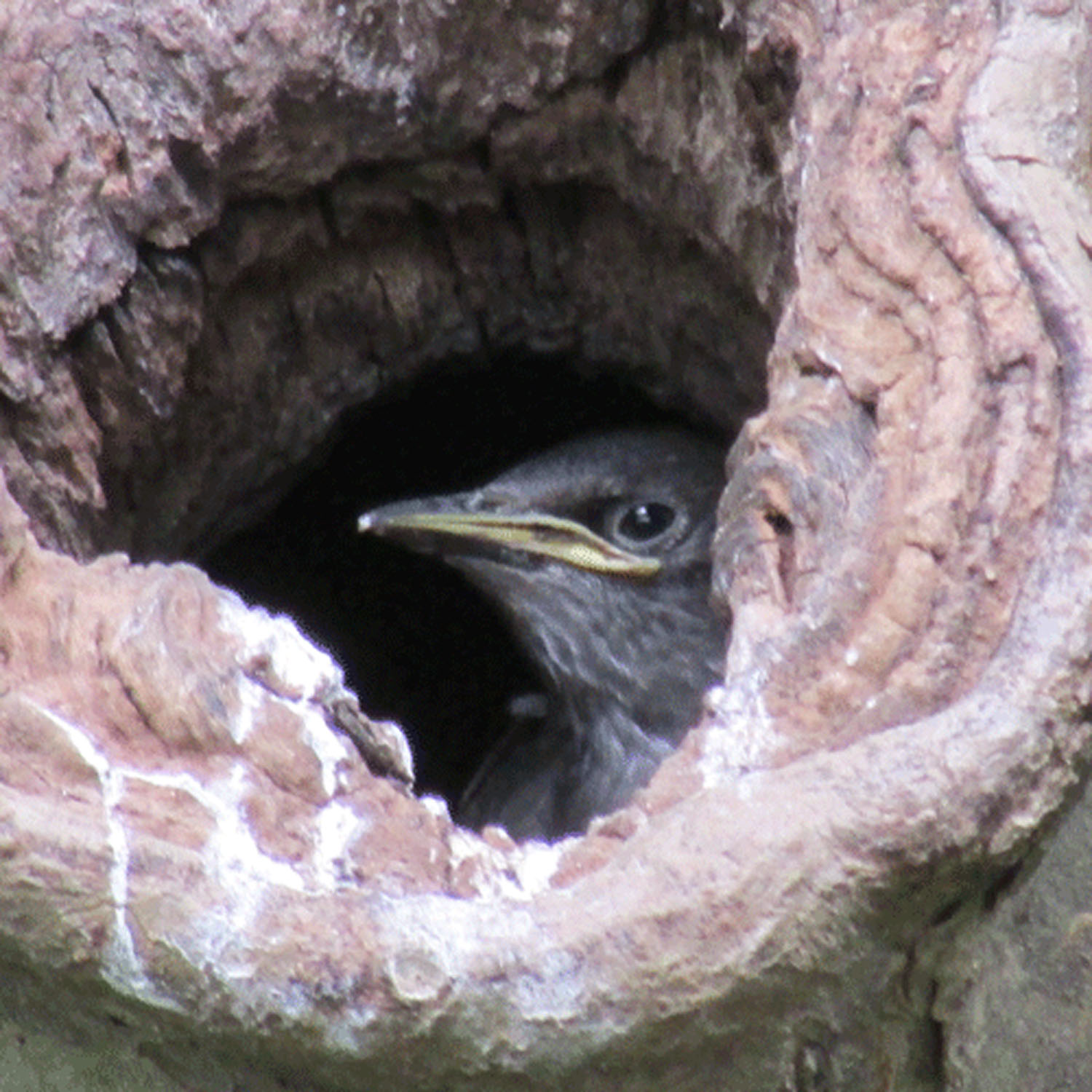European Starlings
The European starling is ubiquitous in North America, but that was not always the case. The starling was introduced into Central Park in the 1890s. According to Scientific American, the story goes that the American Acclimation Society wanted to introduce into America every bird mentioned in Shakespeare. For reference, in Henry IV, Part 1, Hotspur says:
Nay, I will. That’s flat!
He said he would not ransom Mortimer,
Forbad my tongue to speak of Mortimer.
But I will find him when he lies asleep,
And in his ear I’ll holla 'Mortimer!'
Nay,
I’ll have a starling shall be taught to speak
Nothing but 'Mortimer,' and give it him
To keep his anger still in motion.
The society, in the person of Eugene Schieffelin, released some 60 starlings (or starling pairs — Internet sources seem to disagree on the number) into Central Park in 1890 and '91, and by 1950 the starlings could be found from the Atlantic to the Pacific, all across the continent. So now Mr. Schieffelin is blamed for introducing Sturnus vulgaris into North America and therefore loosing what many now consider a nuisance bird across the country, 200 million strong.
European Starling, Turtle Pond, August 2, 2016
When I first heard that starlings were an introduced species, I was told a tale that the birds had been brought over to be part of a theater production, and after the show closed, the birds were released in the park. I liked that story better, but now have to accept that most sources hold Mr. Schieffelin responsible.
So when many people think of starlings, they think of pest birds. But as I hope you'll see in this video, starlings are very often beautiful. They have personality, and watching the flocks fly can be so exciting.
Perhaps seeing this one starling, as I did on August 2 at Turtle Pond in Central Park, next to the berries the bird proceeded to chow down, will help you appreciate the beauty of this common bird.
A Starling Among the Berries is set to music by Chopin.
I will note, though, two things I have observed about starlings: First, they really love to take baths, so much so that I opened my video Bird Bath with them. The joy they have in flapping in the water is contagious. Second, the young starlings, after they've fledged and are full sized and should be feeding themselves, follow their parents around and squawk at them for food, much like American teenagers do when they're quite capable of opening the refrigerator themselves!
More photos from August 2, 2016:
Some starlings from 2013:


